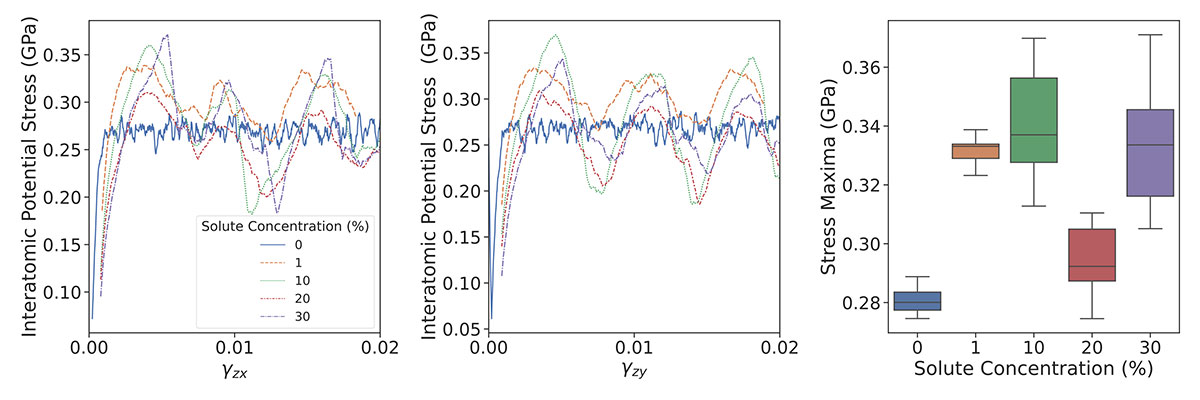News
Graduate Students Use Expanse and Bridges-2 Supercomputers in Next-Generation Materials Research Study
Published October 09, 2022
Katya Sumwalt, SDSC Intern and Kimberly Mann Bruch, SDSC External Relations
Two high-performance supercomputers—Expanse at the San Diego Supercomputer Center (SDSC) at UC San Diego and Bridges-2 at the Pittsburgh Supercomputing Center (PSC) at Carnegie Mellon University and the University of Pittsburgh—were used by researchers at the Georgia Institute of Technology (Georgia Tech) to test the resilience of nanoscale, metallic, multilayered materials, which could be used in a variety of structural applications. Such a class of next-generation materials would feature traits such as low density, high strength, fracture resistance and/or radiation tolerance.
Results of the study, titled Effects of interdiffusion on shear response of semi-coherent {111} interfaces in Ni/Cu, were recently published in the International Journal of Plasticity.
Georgia Tech Regents' Professor David McDowell worked with graduate students Alex Selimov and Kevin Chu to test a series of nanolayered materials and better understand how their properties could allow for higher performance in a variety of structural endeavors.
“In contrast to the common route in academic studies to idealize such systems (e.g., sharp interfaces), it is important to study variations and imperfections that would be expected to arise in actual manufacturing processes,” said McDowell, who also serves as Georgia Tech’s Carter N. Paden Jr. Distinguished Chair in Metals Processing Department, adding that the large computing power of Expanse and Bridges-2 allowed for expedited queue times and for running several tests in parallel.
“The computing architectures available, with high processor counts per node, reduced the run times of our simulations allowing their completion in a timely manner,” McDowell said. “Resources such as Expanse and Bridges-2 have allowed for the development of an entirely new field of study which only exists as a result of the increased volume and velocity of simulation data.”

Supercomputer simulations recently helped Georgia Tech researchers better understand the development of a next-generation class of nanostructured layered materials that can be used for a variety of structural applications that require low density, high strength, fracture resistance or radiation tolerance. These images illustrate stress-strain curves for models with different levels of impurity, referred to in the figure by solute concentration. Improvement in the strength is observed with added impurity concentration; however, the complexity of the changes to the underlying atomic structure with the addition of impurities means that the trend is not straightforward. This is observed as a trend towards enhanced strength with solute concentration in the box plot on the right, albeit lacking definitive correlation. Significant deviation in the mechanical response from the 0% ideal case showcases the importance of considering the role of impurities that are expected to arise during manufacturing processes owing to interdiffusion. Credit: Georgia Institute of Technology
Adoption of information from material design and processing studies like McDowell’s can ultimately improve the strength and long-term, chemo-mechanical failure resistance in transportation, alternative energy and other application domains. Specifically, this research highlights the importance of modeling unreal, unsharp surfaces. Often more idealized models are used to test the strength of the nanoscale metallic multilayers and other base-level materials.
According to the research team, next steps include performing similar studies on other material combinations.
“Once a wide variety of materials are optimized structurally, by realistically constructing them, then we will be able to apply these studies to larger scale products to test the materials in different structures,” McDowell said.
Funding for the supercomputing conducted on Expanse and Bridges-2 was provided by the National Science Foundation Extreme Science and Engineering Discovery Environment, or XSEDE (allocation no. TG-MSS150010).

